
The Betz Limit, or Betz Law, defines the theoretical maximum efficiency a wind turbine generator can produce when rotating at optimal performance. Albert Betz calculated and concluded that any wind turbine can not convert more than 59.3% of the winds kinetic energy into useful mechanical energy simply by turning a rotor blade. A turbines coefficient of power allows us to calculate the total amount of power a wind turbine is producing from the total energy available in the wind at a particular wind speed. This theoretical maximum coefficient of power is known as the Betz Limit.
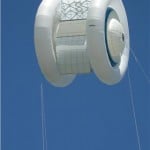
Airborne wind energy uses tethered wings, aerofoils, kites or ballons that fly high up in crosswinds to generate electrical energy. Unlike grounded wind turbines, airborne wind energy devices fly freely in the air connected by a tether to the ground exploiting the relative velocity between the crosswinds and the ground. The force of the wind in higher altitudes above the ground are typically much stronger and more consistent than those closer to the ground so using airborne wind energy devices makes it possible to obtain very high power densities
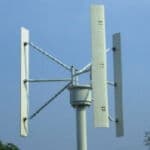
Vertical Axis Wind Turbines are classified as being vertical due to the orientations of the axis of rotation. They consist of two distinct types using drag or/and lift forces on the blades to create the mechanical power required for electricty generation or water pumping. These types are Savonius rotor (drag-driven) and Darrieus rotor (lift-driven) designs
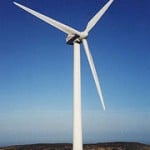
Environmental impact of wind energy and wind farms on the local wildlife and their habitats has been a topic of conversation for many years. Climate change issues,a reduction of CO2 emissions, depleted fossil fuel reserves and soaring fuel prices have all led to an increase in the use of renewable energy sources with wind energy and wind power generation being a cost efficient energy source. Wind turbines generate electricity by harnessing the power of the wind using rotor blades or propellers set in motion by the energy of the wind. While wind power does not produce harmful emissions or hazardous waste or deplete natural resourses, it does however have an impact on the natural habitats of birds and bats

How much electricity does a wind turbine generate is one of the main questions asked by homeowners looking to buy a wind turbine generator. While wind turbine generators are environmentally friendly generators that generate electrical energy using wind power, The type of turbine generator, its blade design and efficiency are all factors which determine its annual power generating performance. Location, wind speed, rotor diameter and variable speed designs for small and mid-size wind turbines all affect its power output. Accurate data of wind speeds and direction throughout a yearly cycle will help in understanding the operating characteristics of a wind turbine allowing for a better purchasing choice
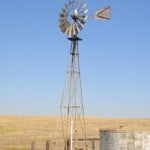
Using wind power to pump water for irrigation or drainage is nothing new. Wind pumping uses the kinetic energy of the wind as a renewable energy resource to produce different and useful energy forms, such as mechanical energy or even electrical energy. Piston pumps or rotary pumps driven by the power of the wind pump the water from one location to another. Wind water pumping reduces the need for diesel driven or electric motor driven pumps as wind driven pumps can produce a continuous flow of water, as long as it is windy, and requires no fossil fuel, making it a more eco-friendly solution
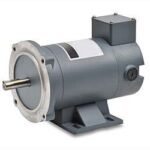
DC permanent magnet generators are commonly used in small wind turbine and micro-hydro designs as the main generator of electrical energy. Brushless direct current (DC) permanent magnet machines are preferred due to their efficiency, reliability, longer life, less maintenance, and higher power output. DC generators for wind turbine applications use permanent magnets to create the magnetic field required for electrical generation. These turbine-driven PMDC generators can produce output power over varying wind speed conditions
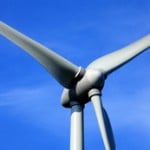
Wind turbine blade design is a major factor in turbine propulsion, efficiency, noise, and control. The aerodynamic design of a wind turbine blade includes parameters such as blade shape, quantity, aerofoil selection and optimal attack angle in order to extract the most energy from the wind. The rotor blades of modern horizontal axis wind turbines closely resemble the look and shape of an aeroplanes propeller as there are similarities in their operation. The relationship between a rotor blades rotational velocity and relative wind speed, called its tip speed ratio is the main blade design parameter to consider as well as the number of blades, chord widths, and aerofoil lift

Verical wind turbines are a relatively new concept in the design of wind turbines. Different vertical axis machines are being designed and developed such as the helical types which can catch the wind from all directions for use in urban environments where their small size and high power output are more suited to home use. Vertical axis wind turbines are also considered safer due to their lower vertical height, rotational speeds, and less moving mechanical components. VAWT designs have their electrical generators positioned closer to the ground for easily access and maintanence. The Darrieus and the Savonius vertical axis types are emerging as the most popular

Wind turbine rotor blades are the main component of any wind power system because without them the rotor will not rotate, so the deign and shape of the blades used for propulsion affects the maximum possible efficiency of the rotor. Over the centuries many types of design of rotor blades have emerged from the wood and cloth designs of windmills to the high torque aerodynamic aerofoil designs of today. Aerofoil three bladed horizontal axis wind turbine designs are now the norm for electricity generation due mainly to its ability to survive and operate under varying wind conditions. The optimum efficient shape of a turbine rotor blade is complex as efficiency, control, noise and aesthetics allplay a role in its design